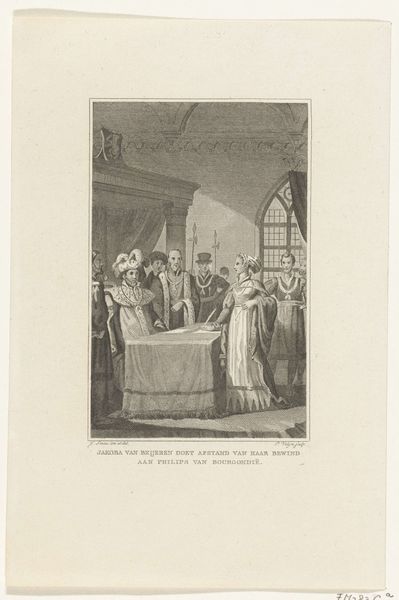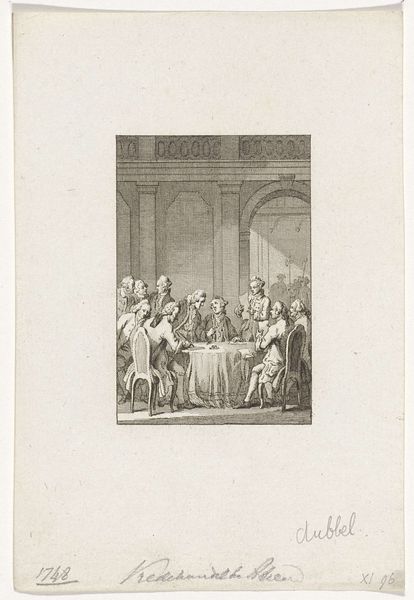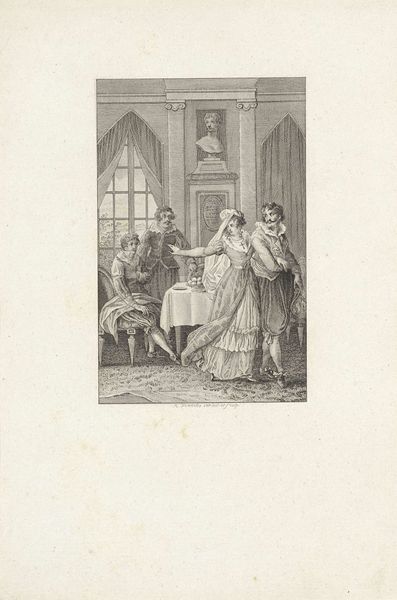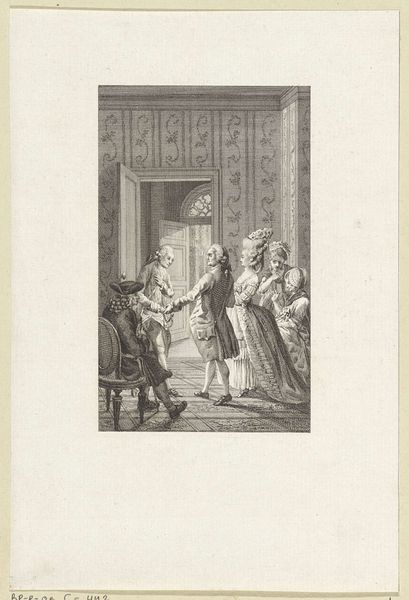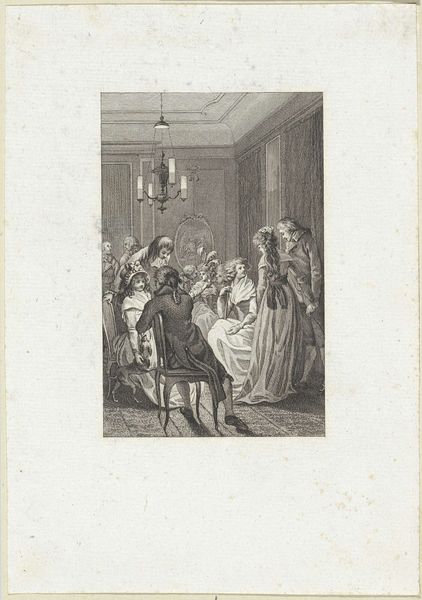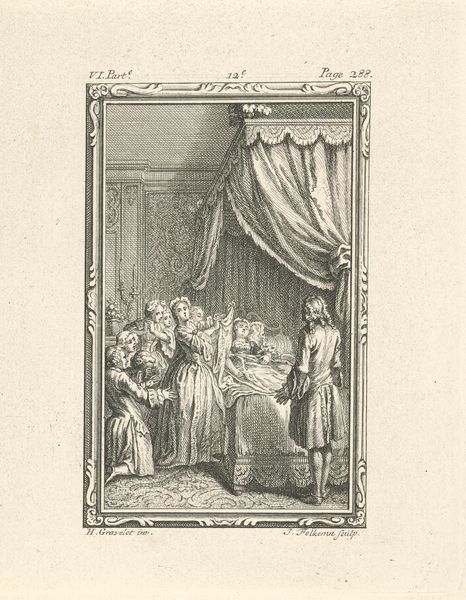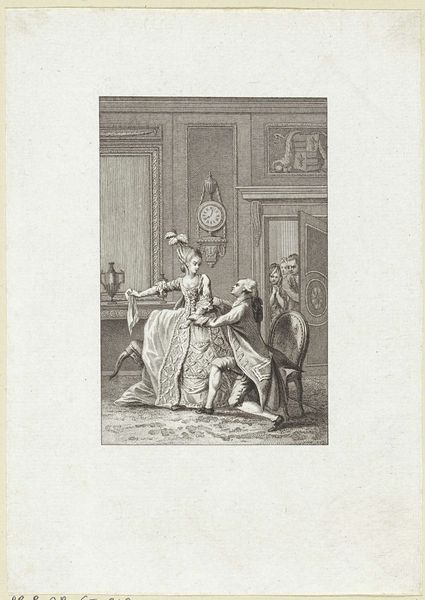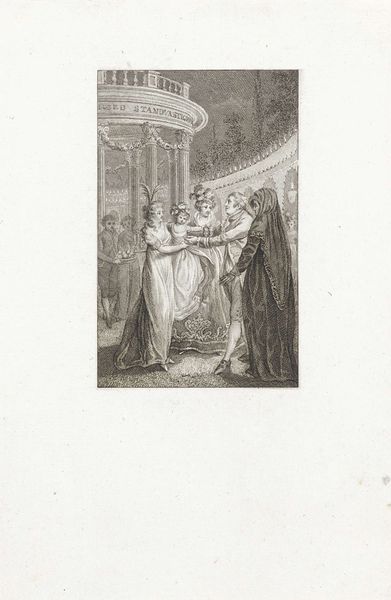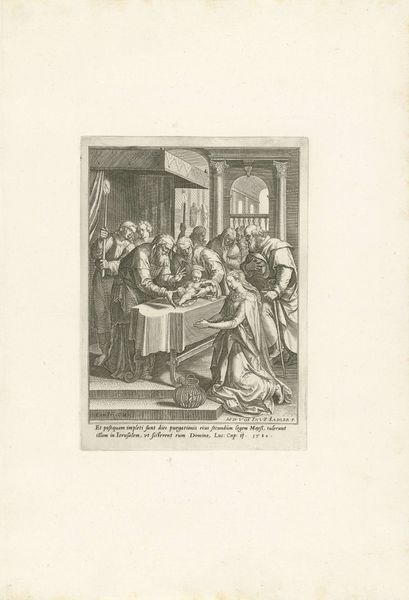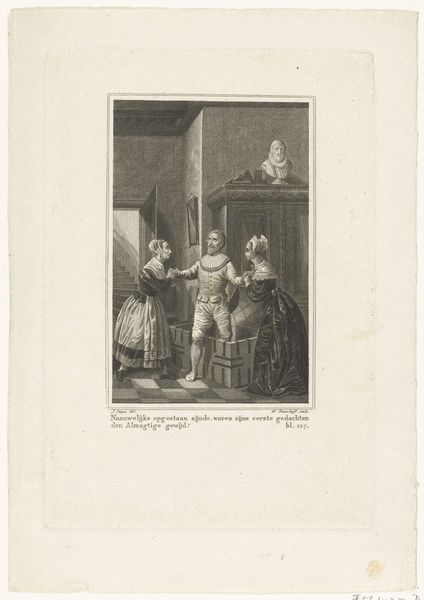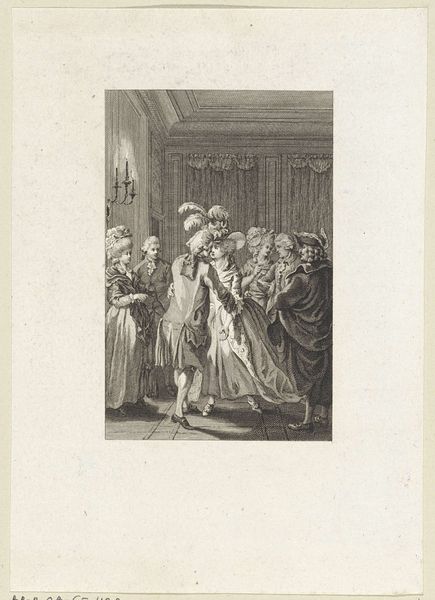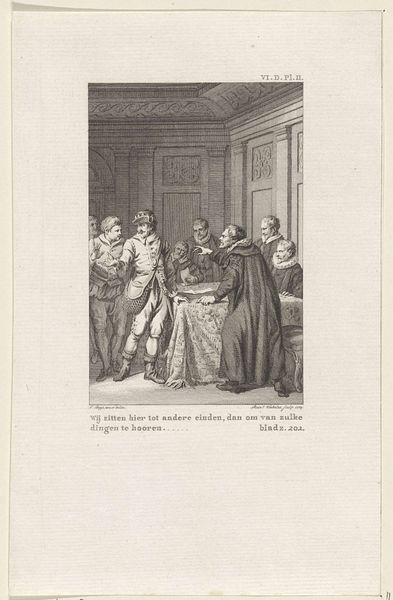
Jacoba van Beieren sluit vrede met Filips de Goede, 1428 1823 - 1829
0:00
0:00
print, paper, ink, engraving
# print
#
paper
#
ink
#
romanticism
#
genre-painting
#
history-painting
#
engraving
Dimensions: height 215 mm, width 145 mm
Copyright: Rijks Museum: Open Domain
Editor: This print, "Jacoba van Beieren sluit vrede met Filips de Goede, 1428," created between 1823 and 1829 by Philippus Velijn, portrays a historical moment. I am fascinated by the intricate lines achieved through engraving, especially how they convey the textures of the clothing and the grandeur of the setting. What strikes you most about this piece? Curator: The print’s material existence, as ink on paper, is integral to understanding it. Engravings like this facilitated the mass reproduction of images, shaping historical narratives for a wider audience. Consider the labour involved in producing the engraving; it speaks to a commercial enterprise distributing Romantic interpretations of Dutch history. How does the act of printing affect our understanding of the event depicted? Editor: That's interesting. So, the print isn't just representing the event; it's also part of a system of production and distribution. I hadn't considered that the Romantic style also had labor implications through material accessibility and wider audiences. But what about the symbolism of the objects themselves? Does that play a role in the peace accord beyond simple historical representation? Curator: The sumptuous garments, the heavy drapery – all signs of wealth and power reproduced en masse. These weren't simply symbols; they were commodities, indicators of social status meticulously rendered to impress the viewer. Think about the labour that created those textiles, and how the print translates that into a consumable image of authority. Does this perspective shift your understanding of the historical narrative? Editor: Absolutely. Viewing the image through the lens of material production and consumption offers a richer context, I never considered the labour that went into creating the garments depicted as part of the print. Curator: Exactly! By focusing on the materiality of the print, we begin to unravel the complex interplay of historical representation, artistic production, and social power structures. Editor: That's been truly insightful! It's changed how I see not only this artwork, but also the broader context of 19th-century historical prints and materiality.
Comments
No comments
Be the first to comment and join the conversation on the ultimate creative platform.
